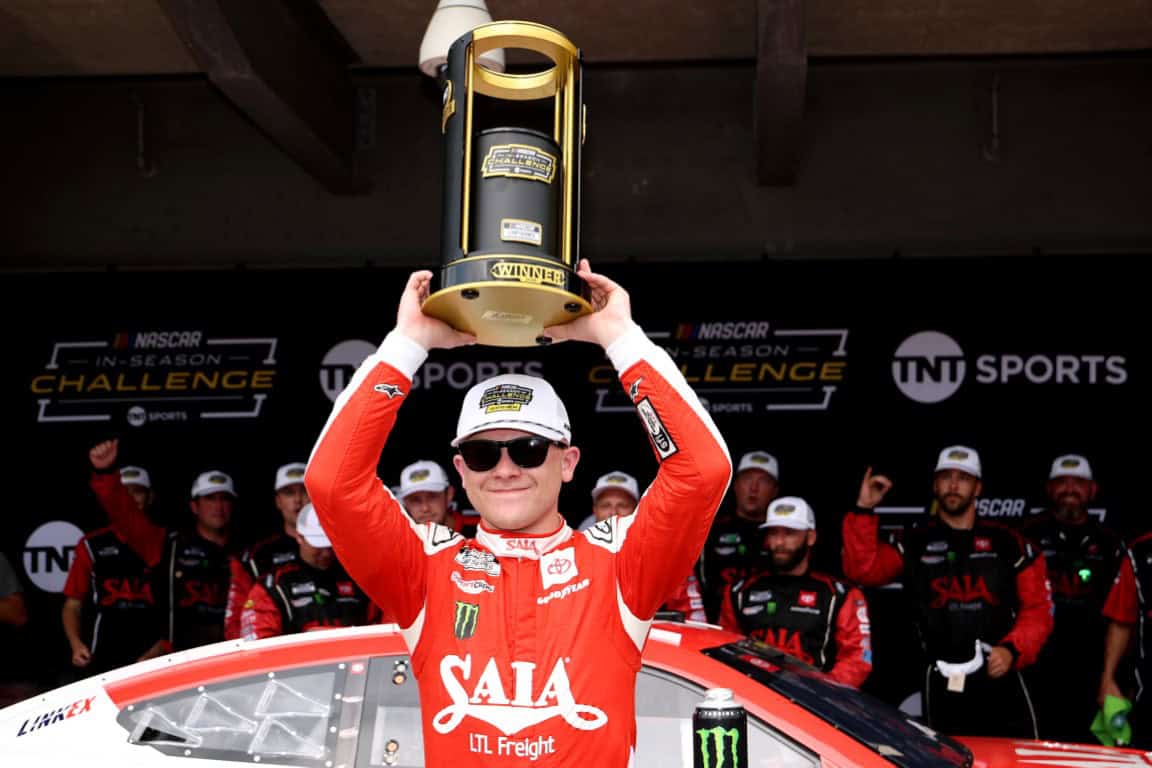There was a ton of hype for NASCAR’s inaugural in-season challenge when it was first announced last summer.
Thirty-two drivers facing off head-to-head in a March Madness-style bracket challenge for $1 million in a five-race summer stretch, on paper, should’ve breathed new life into the halfway point of the season, promoted the rise of NASCAR sports betting (in places where it’s legal) and given fans a race within a race as a side quest to follow during the main event.
It accomplished all those goals, theoretically, but it felt like the challenge fell well short of the excitement and the electricity that it could’ve had by the time Ty Gibbs was crowned the inaugural winner at Indianapolis Motor Speedway last Sunday (July 27).
Much of that excitement was subdued in the very first round, as a lap 69 big one at Atlanta Motor Speedway collected more than 20 cars and ended more than half the head-to-head matchups on the spot.
There were 10 winners in the 2025 NASCAR Cup Series season up to that point that qualified for the tournament, and all 10 were eliminated in the first round.
Upsets here and there are exciting, but a bracket quickly loses interest if the biggest names are all eliminated by the time the final rounds arrive.
Not helping the case was the abnormal seeding, which was set by a driver’s best finish in the three races preceding the challenge. That led to then-regular season points leader William Byron earning the 18th seed, while Gibbs — 23rd in points at the time — was seeded sixth.
There was also confusion in how to cover it.
TNT ran an alternate broadcast that focused exclusively on the challenge, but there was little mention of the challenge mid-race on the main cast, and the main cast lacked special graphics that showed which drivers were competing head-to-head as the race went on. The result was a challenge that ended up becoming more of a subplot than a main event.
The challenge was, and still is, a concept with great potential, but it needs a facelift for 2026. For starters, the seeding should be done by points, and the first round cannot be held at a superspeedway.
But instead of waiting another year to see how a bracket would play out, I’ve decided to create a bracket of my own for the next five weeks as an experiment.
The seeding is set by top 32 drivers in regular-season points after the Brickyard 400, and the first four rounds will be held at Iowa Speedway, Watkins Glen International, Richmond Raceway and Daytona International Speedway, with the playoff-opening Southern 500 serving as the mano-a-mano battle for one million Monopoly bucks.

The idea for this is simple: if a bracket challenge has straightforward seeding, begins at a typical oval and only features one road course and one superspeedway, which drivers would advance to the later rounds?
Which big names would falter, and which big names would make it to the end?
Who wins it all in this scenario?
We’ll have all the answers by Labor Day, and I’ll post an updated bracket at the end of Stat Sheet each week until we crown a champion.
Stephen Stumpf is the NASCAR Content Director for Frontstretch and is a three-year veteran of the site. His weekly column is “Stat Sheet,” and he formerly wrote "4 Burning Questions" for three years. He also writes commentaries, contributes to podcasts, edits articles and is frequently at the track for on-site coverage.
Find Stephen on Twitter @stephen_stumpf





